Mexico’s National Shrine of La Santa Muerte
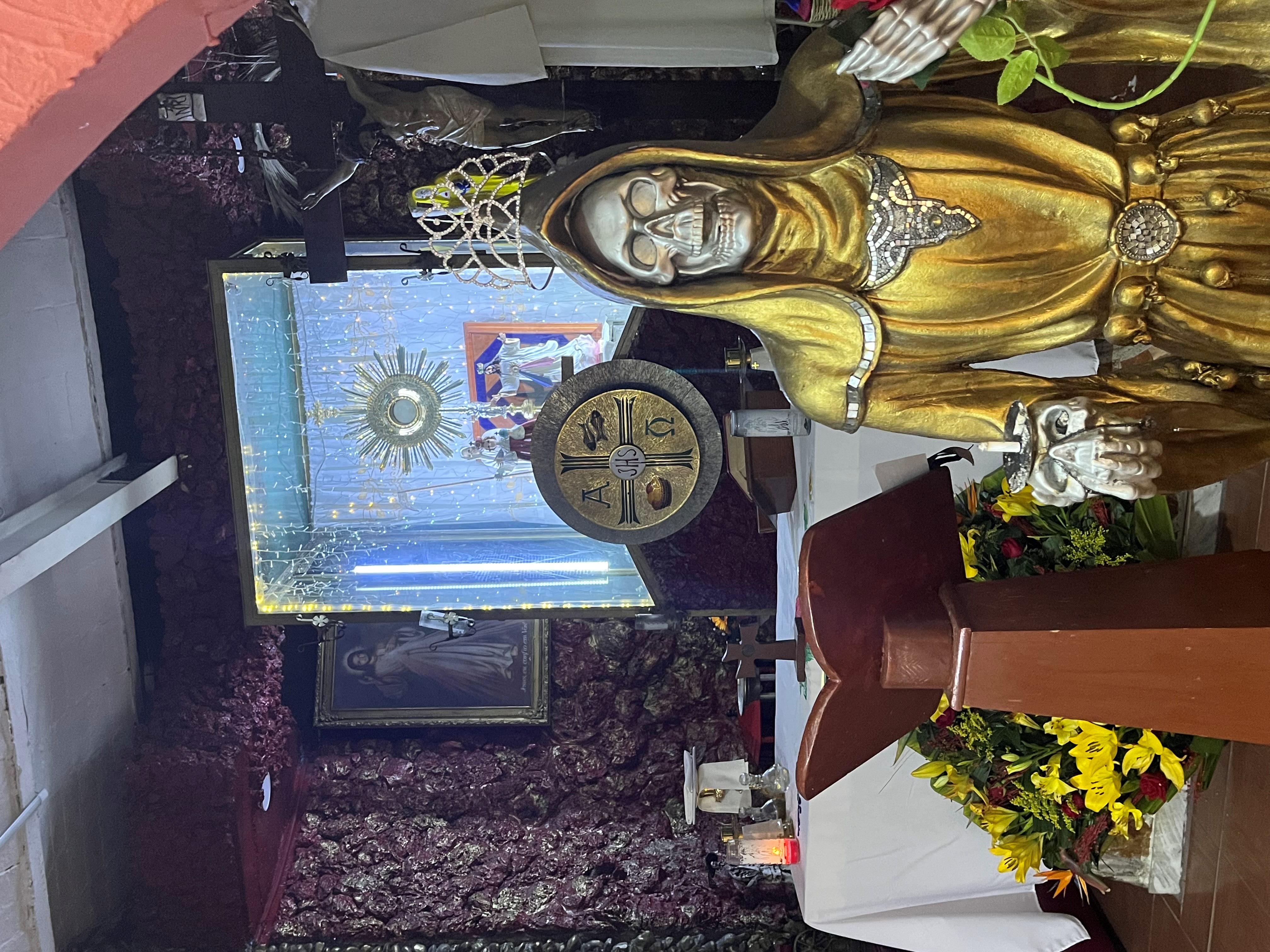 For centuries, Mexico has been a predominantly Catholic country. Catholicism is so heavily intertwined into the daily lives of Mexicans that it is often seen as synonymous with Mexican culture. Due to this, Mexico has also been a hub for Catholic pilgrimages with holy sites such as La Basílica de Guadalupe which attracts millions of devout worshippers each year. About 4 miles away in the heart of Mexico City’s Venustiano Carranza burrough lies another religious shrine that has been gaining popularity over the last few years: El Santuario Nacional de la Santa Muerte.
For centuries, Mexico has been a predominantly Catholic country. Catholicism is so heavily intertwined into the daily lives of Mexicans that it is often seen as synonymous with Mexican culture. Due to this, Mexico has also been a hub for Catholic pilgrimages with holy sites such as La Basílica de Guadalupe which attracts millions of devout worshippers each year. About 4 miles away in the heart of Mexico City’s Venustiano Carranza burrough lies another religious shrine that has been gaining popularity over the last few years: El Santuario Nacional de la Santa Muerte.
La Santa Muerte has been growing in popularity throughout the years for a plethora of reasons.With this, comes many misconceptions as to how she is to be worshiped. Many try to claim that she does not want to be associated with the Church and that it is impossible to be a Catholic Santa Muerte devotee. This type of misinformation spread throughout the internet has led to many believing she is to be worshiped alongside Pagan gods and is someone sinister who gets jealous over the worship of other deities.
While this form of worship is valid to some, it completely ignores how Mexicans have worshiped her before her worship was made public in 2001 when devotee Enriqueta “Doña Queta” Romero made the first public shrine dedicated to La Santa Muerte in Tepito, Mexico City. Although Santa Muerte is not a saint that is officially recognized by the Catholic Church, this does not stop Santa Muerte devotees from intertwining their faith in her alongside their faith in Catholicism.
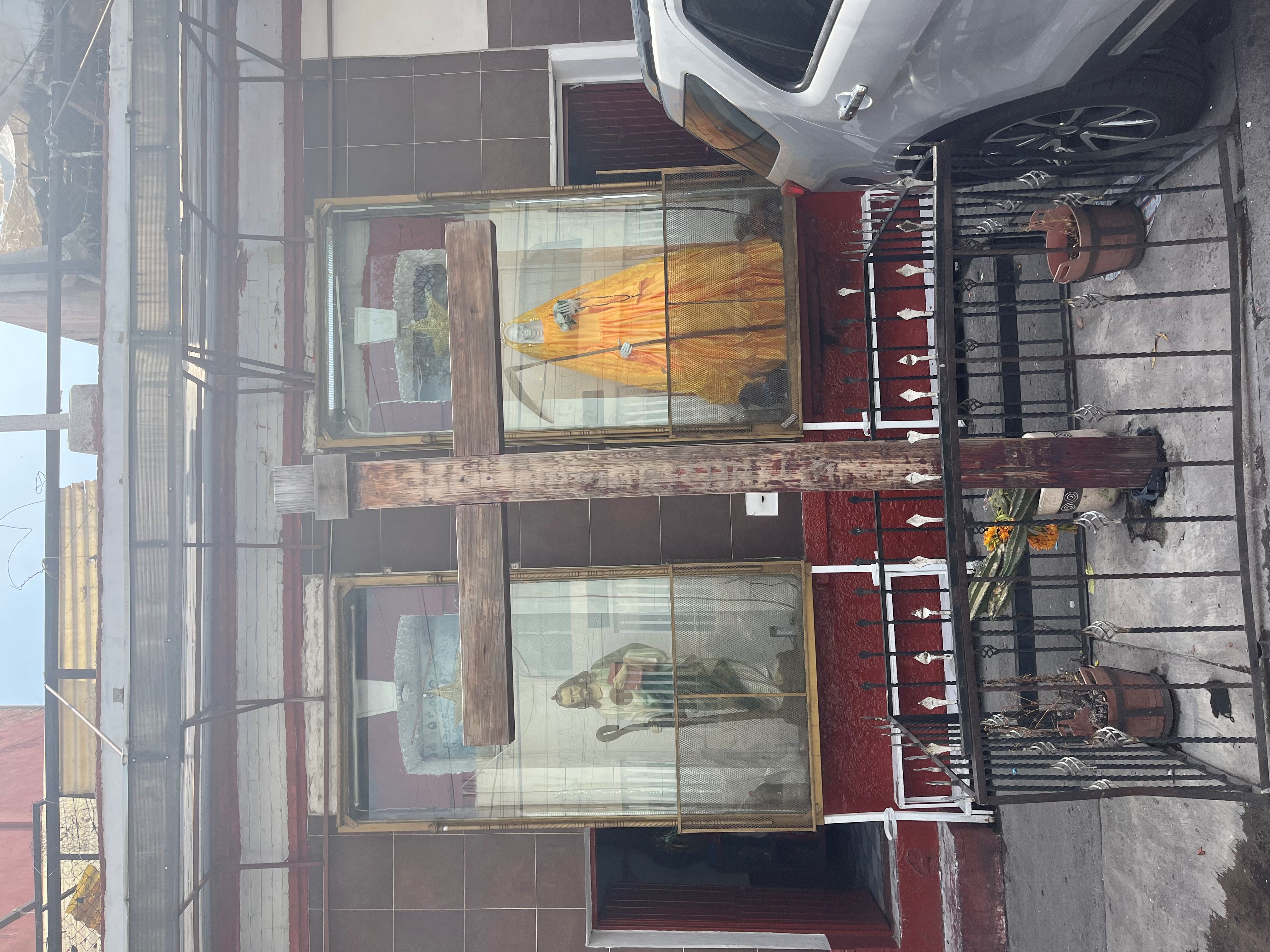
During a trip to Mexico City, I was able to visit El Único Santuario Nacional de la Santa Muerte. When I first arrived at the church I had noticed statues of La Santa Muerte adorned in a gold dress and San Judas posted out front—both figures with a cross in the center. When I walked inside, the calm and peaceful smell of incense filled the room. I was greeted by a woman who asked me if I had any questions regarding the beautiful shrine and if I wanted to purchase a rosary. There were several options, most rosaries were of La Santa Muerte but there were other rosaries that depicted Jesus, La Virgen, San Mateo, San Judas and others. While I made my purchase I overheard her conversation with an elderly woman about how La Reina Blanca will protect her grandson from homophobic hate crimes.
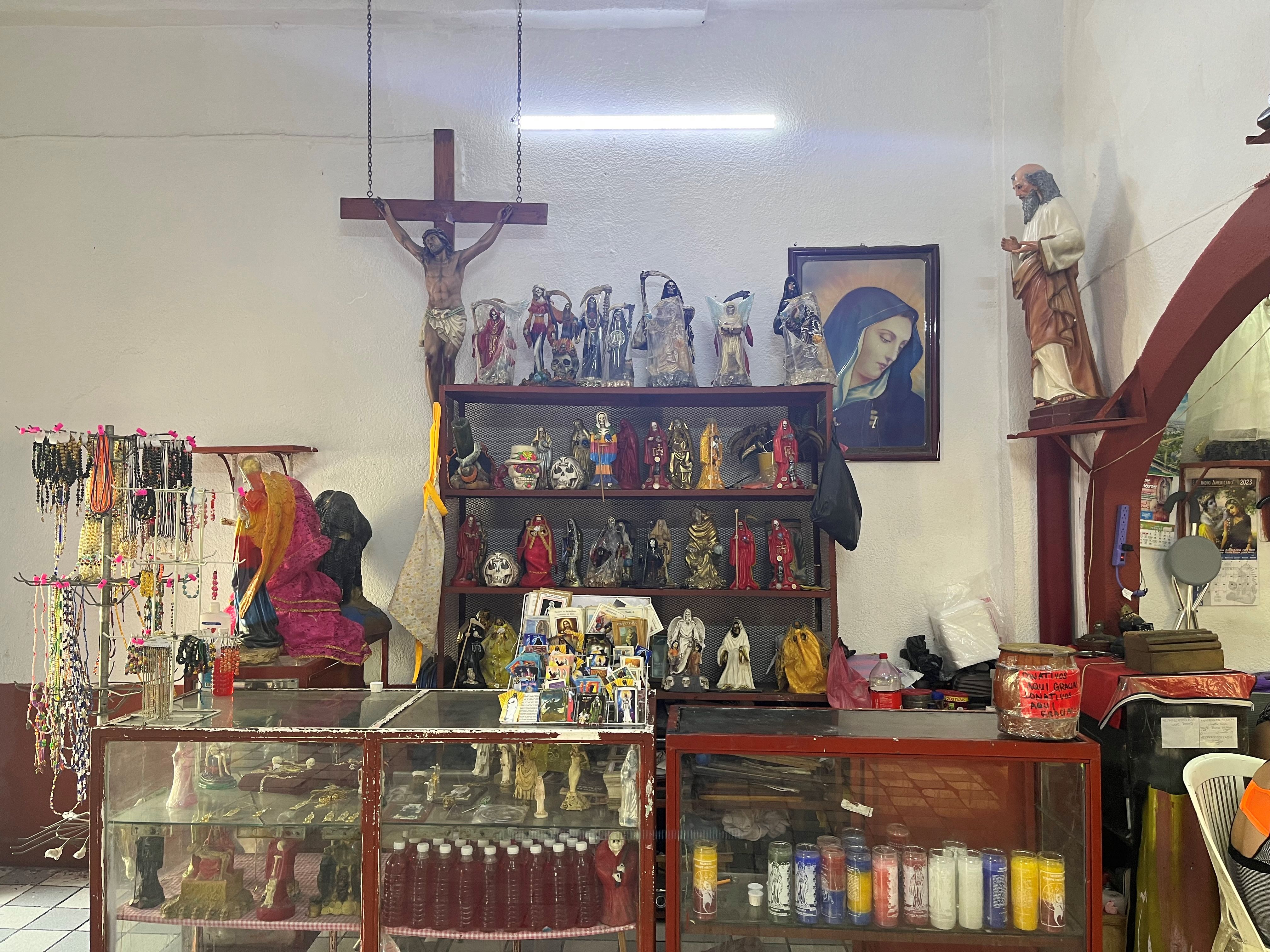
Among the rosaries there were also several pendants, bracelets, and prayer cards for sale; however, what stood out the most to me were the various statues of La Santa Muerte and the various configurations they came in. Each color represents different blessings she can bring to her devotees. A white cloak represents blessings of protection, peace and harmony. A red cloak represents the desire for Santa Muerte to bring about new interpersonal relationships or to fix current ones. A blue cloak is for blessings regarding health. A yellow cloak represents the blessing of money and fortune. A black cloak is to offer protection against curses and black magic. A purple cloak is used to convert negative energy into positive energy. A green cloak is used to represent the desire for justice to be served where it has not been. Lastly, the seven– colored cloak is used to ask La Santa Muerte for all seven blessings; it represents all seven sacraments and to some it is used to symbolize the seven chakras. What was notable in this display honoring The Sacred Lady of Death and the materials to worship God through her was that depictions of Jesus and La Virgen were emphasized in the background.
As I walked through the Church an elderly woman was praying by herself. Tears fell from her face as she conversated with God and the saints to whom she devotes herself. Her powerful emotions filled the room and a little girl walked over to the aisle and asked her if she was okay. The old woman responded in Spanish “Yes of course young one, I will always be okay in this house of God.”
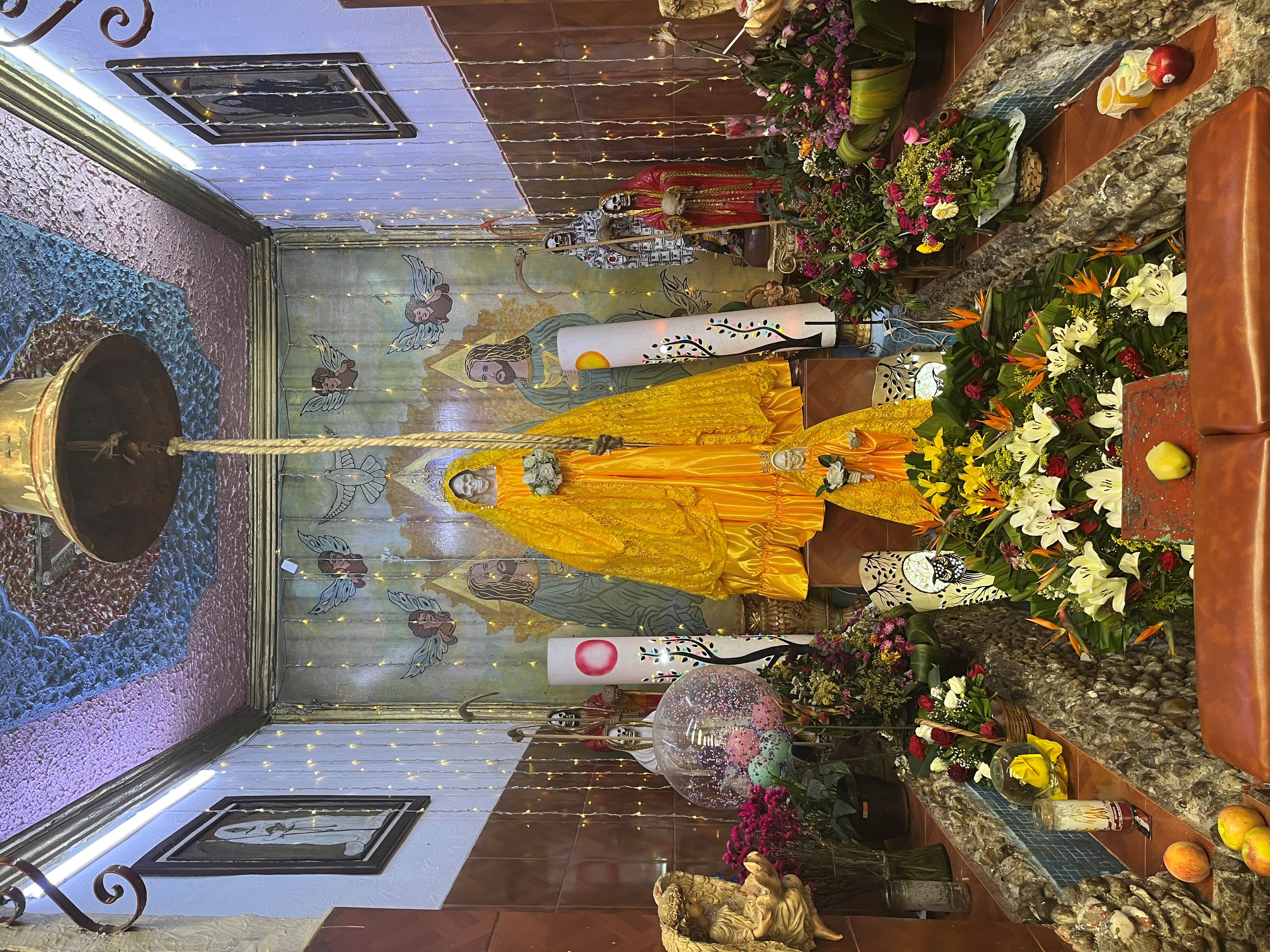
I walked over to an altar posted at the right of the aisle. The altar had several depictions of La Huesuda throughout it in the forms of statues, candles, and paintings. Behind the main statue of La Santisima Muerte was a mural depicting Jesus Christ and Cherubim. Around the altar were offerings left by devotees such as flowers, alcohol, money, fruit, water, balloons, prayer cards, and snacks.
As I continued to walk down the aisle I saw depictions of La Santa Muerte everywhere in several colors and with different symbols such as her scythe, throne, tiara, owl, and scale. Depictions of Saints such as San Mateo, San Francisco, San Judas, San Miguel, San Pedro, San Roque and more accompanied her throughout the Church. As I approached the front, a statue of La Virgen was displayed across from a display case with several statues of baby Jesus.
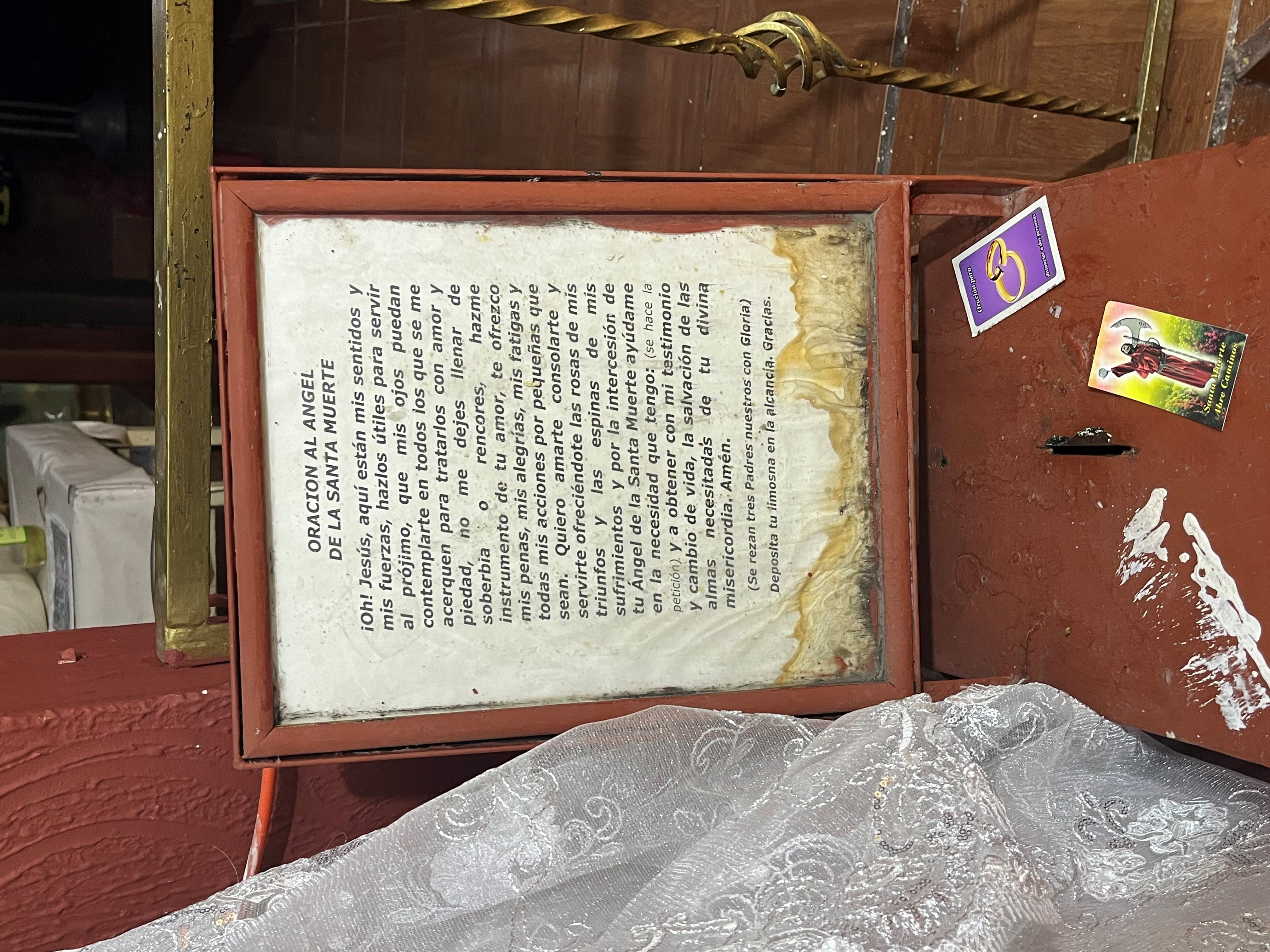
As I approached the front I began reading Oracion Al Angel De La Santa Muerte at the front of the aisle, a lady walked inside carrying an elote and an esquite. She quickly made her way over to the altar previously mentioned and placed her offerings onto the altar. She got on her knees and began to whisper the same oracion I was reading moments before. She finished her prayer, made the sign of the cross and rang the bell above the altar. She then hurried back outside and about two minutes later she came back inside with two more esquites for the altar. She set them down, signed the cross and hurried back outside once again.
As I looked at the display at the front of the aisle where the father conducts mass, a golden Santa Muerte statue stood up front. Behind her was a statue of Jesus on the Cross facing a smaller Santa Muerte statue behind him. In the center was a display of Jesus, San Miguel, baby Jesus and La Santa Muerte behind a sculpture containing multiple Catholic symbols. At the center of the cross were the letters IHS which is an English translation of the first three letters of Jesus’ name in Greek. These letters were at the center of a cross, alluding to Jesus on the cross. Around the cross were four images. Two of these figures were the Greek letters Alpha and Omega which refers to Christ as the beginning and end of all that exists. The other two markings were a pair of fish and a loaf of bread which represent the Eucharist and Jesus’ original disciples being the fishers of men.
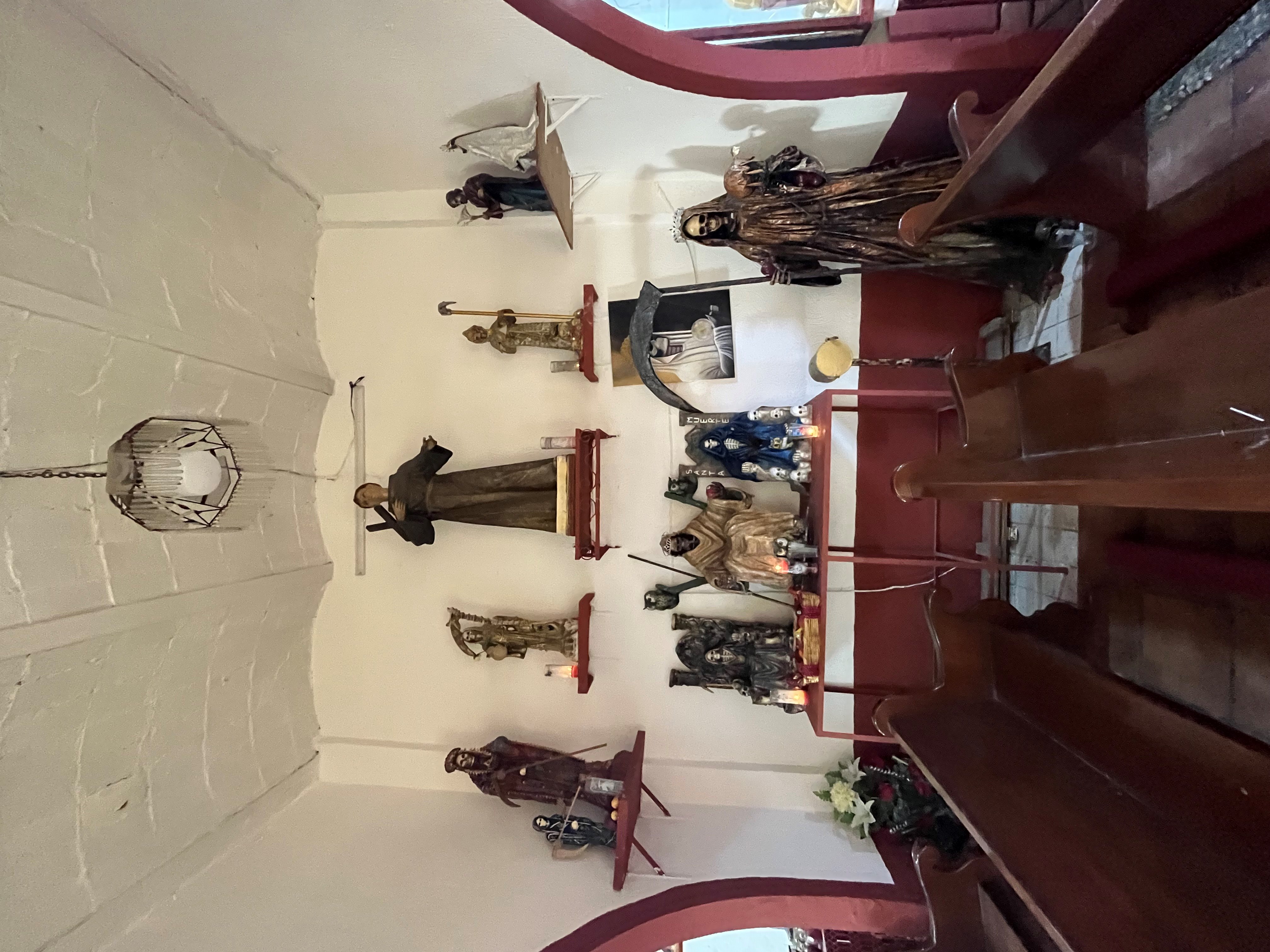
After spending another twenty minutes inside of the church, I was ready to leave. As I was about to walk out the door the woman who originally greeted me said she hopes I receive the blessings I came for. I told her I hope she does as well and made my way back outside.
For those of you who wish to visit this beautiful shrine to La Santa Muerte please visit Nicolás Bravo 35, Zona Centro, Venustiano Carranza, 15270 Ciudad de México, CDMX, Mexico.


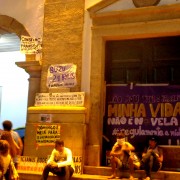

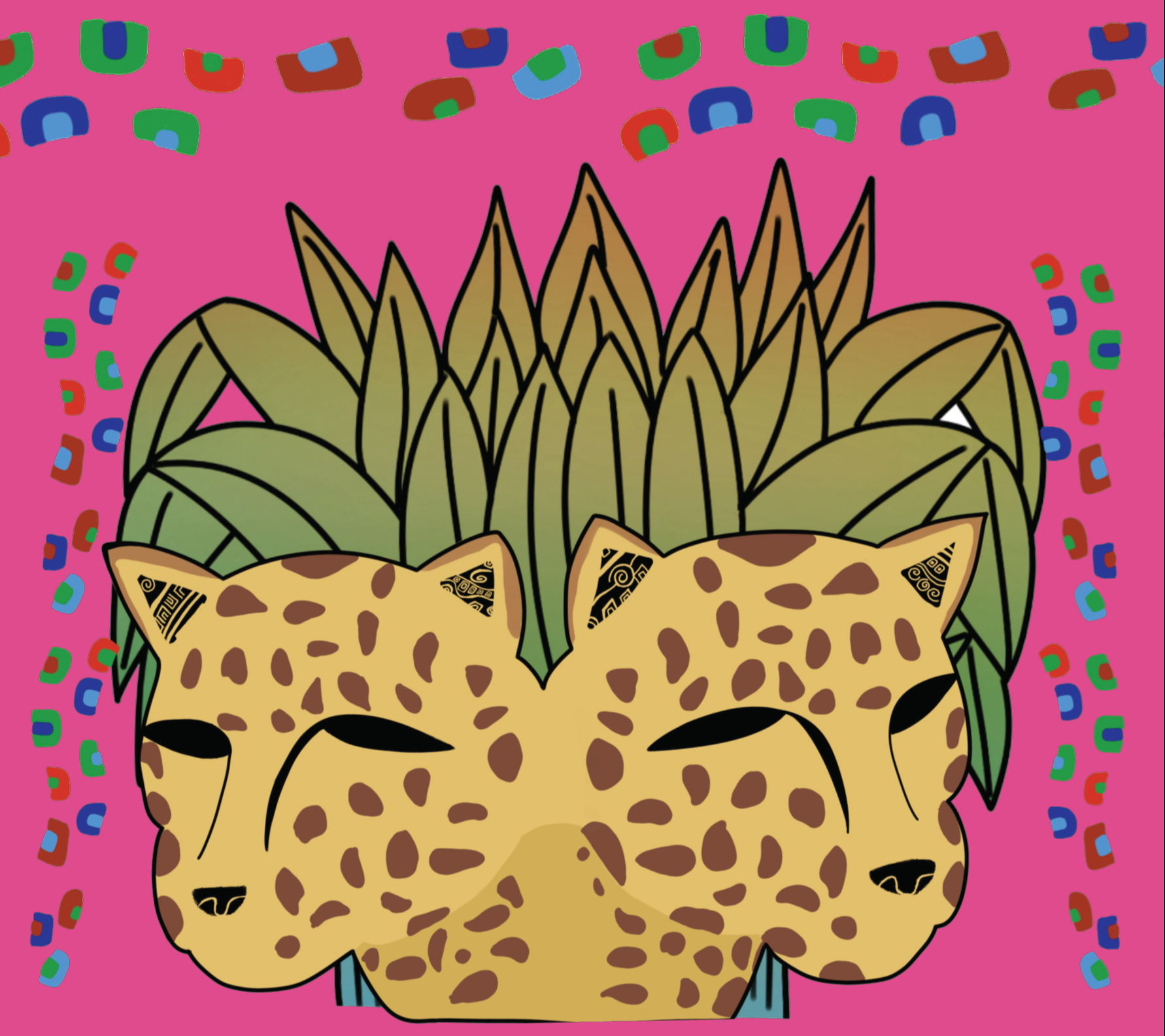
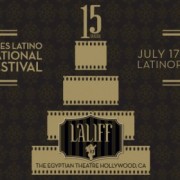



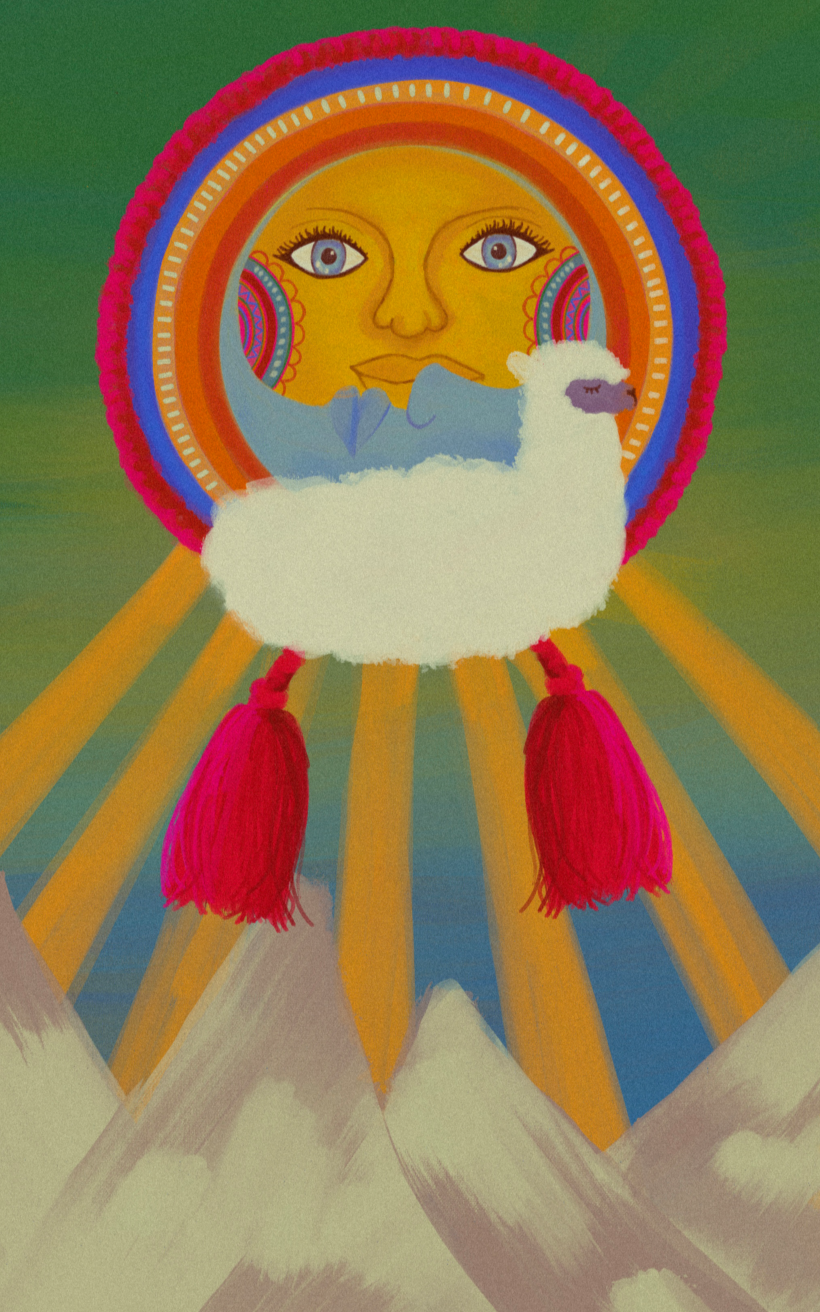
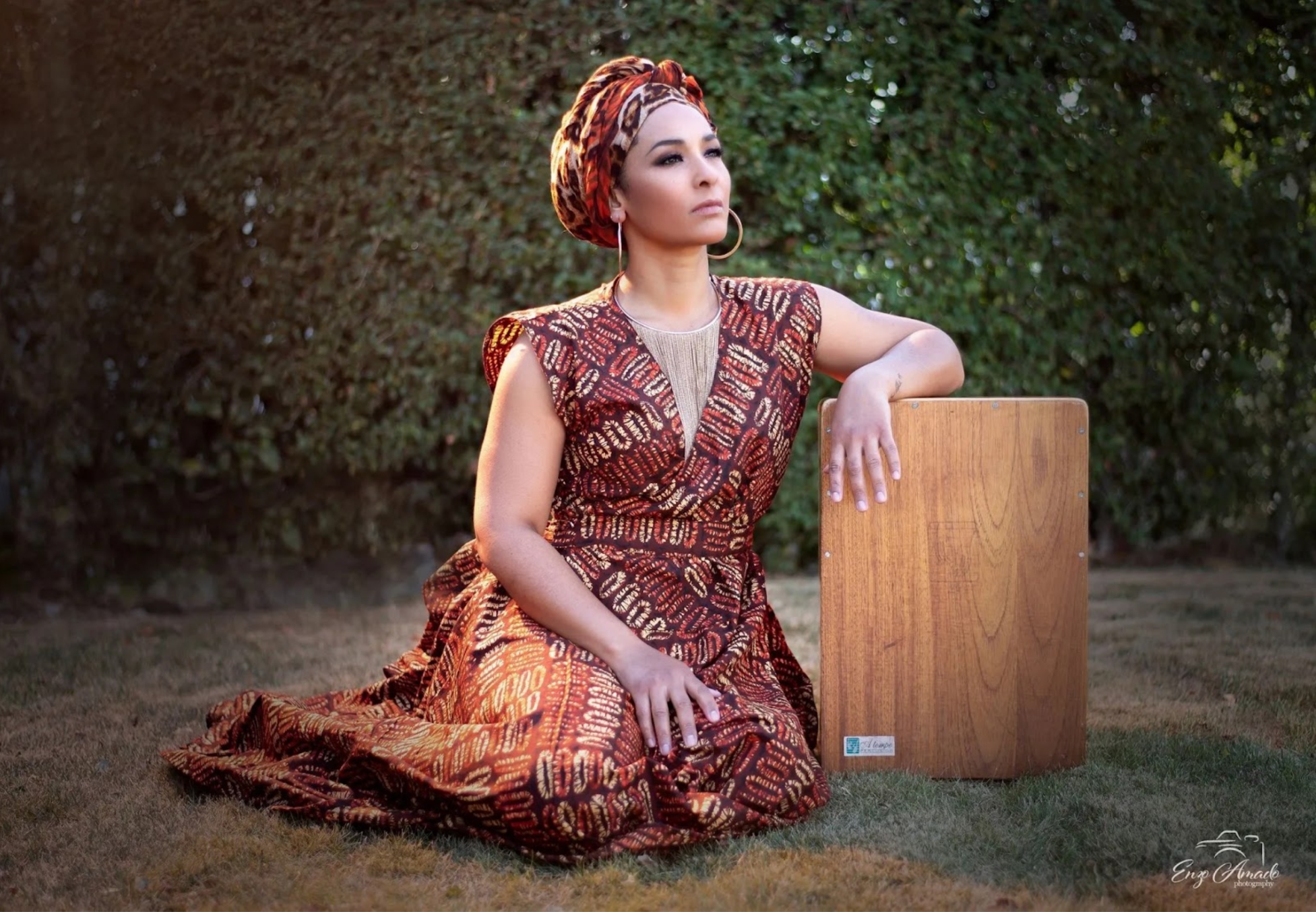
Leave a Reply
Want to join the discussion?Feel free to contribute!